UC grad Hasaan Mohsin reaches for the stars and a career in spaceflight
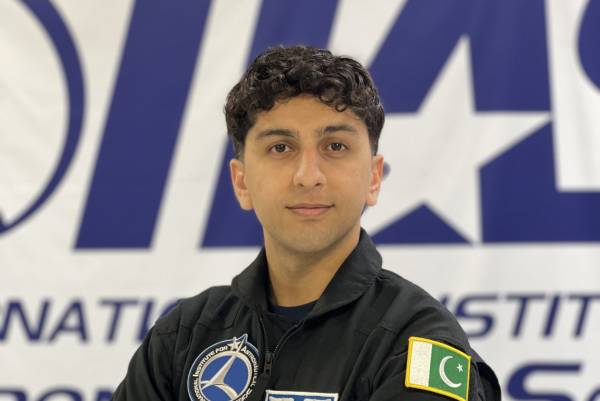
Many dream of becoming astronauts, but few come close to making that dream a reality. During his four years at the University of Toronto, UC graduating student Hasaan Mohsin took a few large steps toward achieving his space ambitions: getting a scuba diving license, working towards a private pilot license, joining the International Institute for Astronautical Sciences (IIAS) and diving into space research.
Born in Pakistan and raised in Saudi Arabia, Mohsin’s interest in aviation started at an early age. As a four-year-old, Mohsin wanted to fly a plane, and his parents granted his wish by taking him to an Emirates airline Boeing 777 simulator.
As he grew older, Mohsin realized that his dream of travelling to space might be limited to theory and research, as both Pakistan and Saudi Arabia have space programs but limited opportunities for space travel.

“If I can't go to space, I can still study space from the ground,” says Mohsin. “I can still contribute to astrophysics research and theories. And U of T has one of the best programs to help me achieve those goals."
Mohsin is graduating this June with an honours bachelor of science degree majoring in physics and astronomy and astrophysics with a minor in Spanish.
During his undergraduate years, he delved into a variety of research topics. Through the Department of Physics, Mohsin studied stellar fly-bys, examining how stars can potentially alter the trajectories of other stars or systems they encounter.
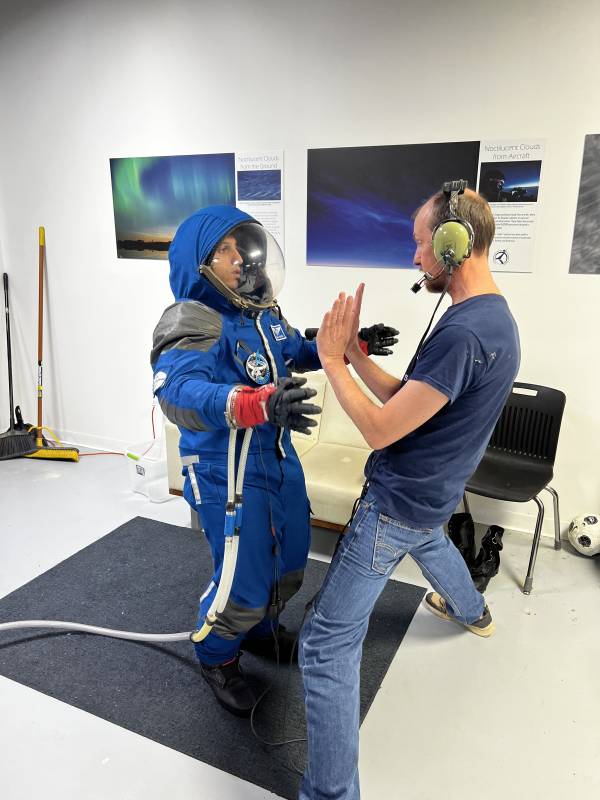
He also studied atmospheres of exoplanets, including habitable planets. He enjoyed this research so much, he chose exoplanetary science for his final capstone project with Lea Hirsch, an assistant professor, teaching stream at University of Toronto Mississauga, for which he used machine learning to analyze exoplanet habitability.
In his spare time, he volunteered to organize the Canadian Space Conference, the largest space conference in Canada, and joined the Astronomy & Space Exploration Association (ASX) student group at U of T, where he introduced the members of the public to telescopes and helped them spot celestial objects.
He also shared his passion with other students. While living in Morrison Hall residence, Mohsin purchased a telescope to show his friends celestial objects. His favourite memory of his undergraduate years is taking his friends to the center of campus to observe a lunar eclipse.
As commercial space travel dominated headlines, Mohsin saw it as his ticket to space. “With commercial space travel, people like me — from Pakistan or Saudi Arabia — have a chance to experience space travel. I watched Shawna Pandya, who is a Canadian commercial astronaut, and was inspired to follow this new path.”
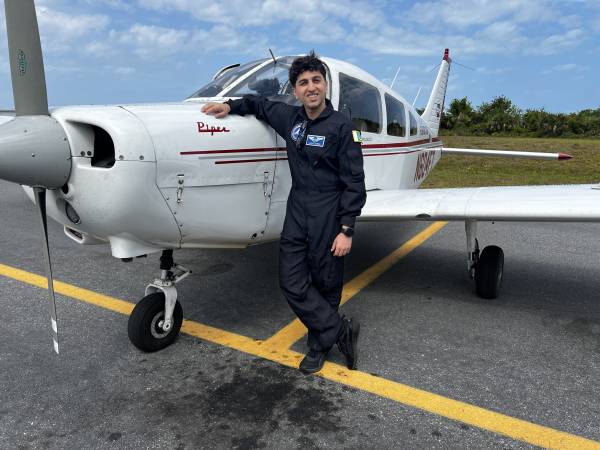
Mohsin spent his summers expanding his skills through internships and hands-on training. One summer, he worked with a Vancouver-based start-up developing lighting solutions for NASA missions using quantum dot technology.
Realizing that a pilot license would give him a unique edge and valuable hands-on flight experience, Mohsin pursued his private pilot license last summer at Billy Bishop Airport in Toronto.
“Training for my private pilot license while being a full-time student was one of the toughest challenges I’ve taken on,” says Mohsin. “I practically lived at Billy Bishop Airport all summer, studying at the terminal, flying whenever the weather cleared, and squeezing in ground school at night. There were several overwhelming moments where I thought about dropping out of flight school, but I kept at it no matter what.”
The culmination of his training came in October when Mohsin did his first solo flight over Toronto.
“For every pilot, their first solo flight is the most transformative experience while training,” he says. “That day, I remember being super nervous while taxiing alone. As I lined up on the runway, I took a deep breath, cleared my mind of all thoughts, and just let muscle memory take over. I reminded myself that I had practiced for this moment for months. I was ready to face any challenges that could occur. I put full power in and took off as smooth as a bird. In that instance, I truly felt like a pilot.”
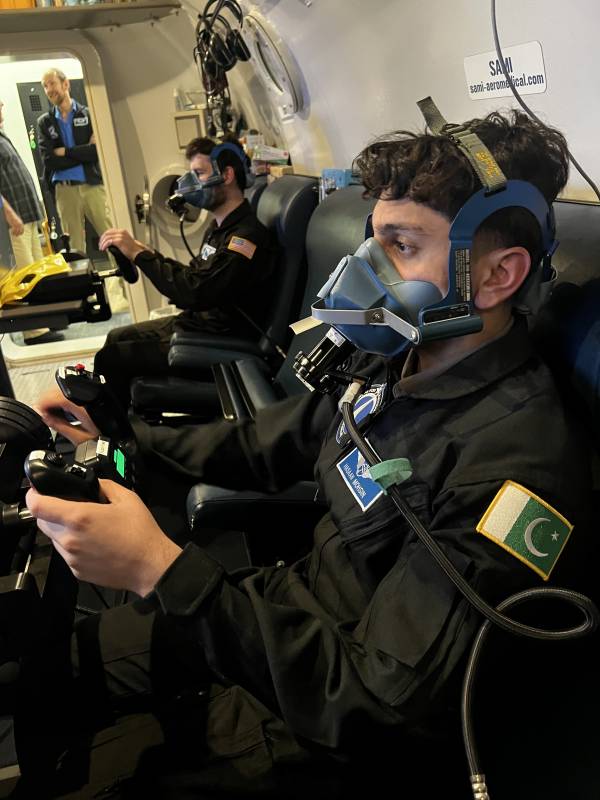
Armed with his research experience, a scuba diving license and aviation background, Mohsin joined the International Institute for Astronautical Sciences (IIAS), where he is receiving hands-on training with space technologies. He juggled his first IIAS course with his final term at U of T. “I remember finishing my final test at IIAS in Florida and flying right back to Toronto,” says Mohsin. “I made in just time to write my final exam with only a few hours to spare.”
The first IIAS course focused on spacesuit training, where he learned about various types of suits, life support systems, cooling systems and the suiting-up process. “It would take four people and me 30 minutes to don my suit,” he says.
While in Florida, Mohsin also completed hypoxia training, where astronauts learn how to recognize and manage the effects of low oxygen levels. “The challenging part for me was getting lightheaded and losing colour vision,” he recalls.
Back in the cockpit at IIAS, Mohsin participated in suborbital flight simulations —similar to what Katy Perry experienced during her space flight on April 14, 2025, when she joined Blue Origin’s historic NS-31 mission, the first all-female crewed spaceflight since 1963.
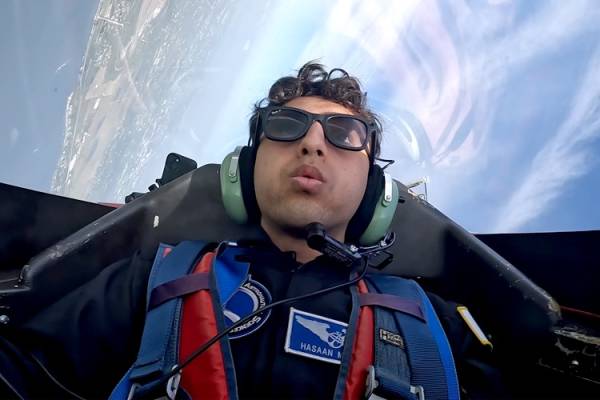
He also underwent high-G aerobatic flight training, where he learned to perform counter-G manoeuvres.
This is where Mohsin’s pilot training proved invaluable. His instructor let him take control of the Extra300L plane above Cape Canaveral, Florida. “This was an unmatched experience,” he says. “I got to do spins, aileron rolls, barrel rolls, hammerheads, all of it. It was like dancing with physics.”
Following convocation, Mohsin plans to continue his training at IIAS. “I’ll be heading to Ottawa to design and test my own experiment in a microgravity flight,” he says. He is also pursuing a research project focusing on advancing spacesuit design.
Reflecting on his time at U of T, he says, “U of T gave me more than an education, it gave me grit. The late nights in Robarts, the hours in the labs at McLennan and the professors who challenged me to reach higher. It all shaped the person I am today.”